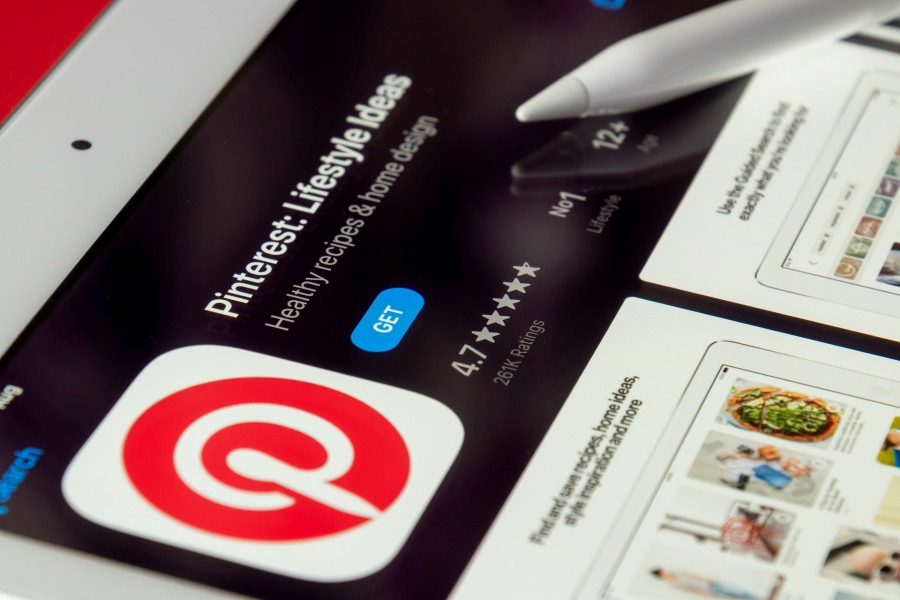 There’s no doubt that the COVID-19 crisis has changed the world. Some of these changes are temporary, while others may prove to be permanent – and still, others may not even be clear just yet.
There’s no doubt that the COVID-19 crisis has changed the world. Some of these changes are temporary, while others may prove to be permanent – and still, others may not even be clear just yet.
But one thing that is clear? About four months after the first stay-at-home orders were declared in the U.S., we’re all still spending much more time online than ever before. Many people are working and socializing almost exclusively on video chat platforms like Zoom, while nights out to the movies or concerts have been replaced by nights in with Netflix or live-streamed performances.
COVID-19 has changed or accelerated pretty much everything about our online behavior, meaning:
- Which apps and platforms are being used
- Who is using them
- What we’re using them for
- How much time we’re spending on them
When it comes to digital and social media trends for 2020, COVID-19 has thrown many marketing experts for a loop, ushering in developments that no one could have predicted. We’ll get into the numbers on some of these trends, plus what they mean for brands, below.
Digital and Social Media Marketing Trends in the Era of COVID-19
As mentioned above, the latest research on digital app use and consumer behaviors shows the impacts of COVID-19 across virtually every aspect of online behavior, from which apps are popular to how people are actually using them.
The New York Times provides some of the most interesting data on these behaviors, highlighted below:
- Website traffic beats mobile traffic: NYT data showed that since February, website traffic increased for Facebook by 27%, Netflix by 16%, and YouTube by 15.3%. That’s compared to app traffic increases of just 1.1% for Facebook and .03% for Netflix, while traffic for the YouTube app went down by 4.5%.
- Video chat platforms hit the jackpot: While Zoom has quite literally zoomed from obscure workplace reference to a household name, lesser-known video chatting platforms like Houseparty and Google Duo have both increased in use (by 79.4% and 12.4% respectively).
- Local and established newspapers beat partisan journalism: As people look for trustworthy information and updates about the COVID-19 crisis, readership of more established news outlets has soared, including an increase of over 50% for both the New York Times and Washington Post.
- Sports viewership declines while gaming streams rise: Now that professional sports are almost universally canceled, people are watching video game streams instead. The game streaming site Twitch has seen an average daily traffic increase of 19.7% since February, while ESPN.com’s traffic went down by a whopping 40.2%.
Additional research corroborates these findings:
- Facebook-owned messaging app What’s App makes a comeback: What’s App use initially grew by 27% at the start of the pandemic, then jumped to a 41% increase in the mid-phase.
- Facebook and Instagram are still going strong: While new platforms like TikTok are making waves (more on that below), Facebook and Instagram still saw their usage “double” within the first week of the pandemic.
- Visual content reigns supreme: With theaters closed, studios are releasing films online, driving people to streaming platforms to watch things they normally would be packing theaters to see. Disney released Frozen 2 early to Disney+, while Universal Pictures released “The Hunt,” “The Invisible Man,” and “Emma” to streaming sites alongside their global theatrical releases. Meanwhile, people are logging an average of 52 minutes per day on TikTok, a relatively new streaming platform that has eclipsed the popularity of Snapchat and Instagram among young users.
These stats show that people are using the internet for entertainment, genuine connection, and trustworthy information more than ever before.
TikTok is a Clear Winner
TikTok, a social media platform for sharing short videos similar to the now-defunct Vine, was dismissed by many as a Gen Z obsession not too long ago. Now, the platform has emerged as a real winner of the digital space in the age of COVID-19. TikTok has seen not only a huge increase in users in the first quarter of 2020, but also shifts in the demographics of those users, reaching older audiences.
How many people are using TikTok?
- In the first quarter of 2020, TikTok became the most downloaded app in the world, with 315 million new downloads. That put the app at 2 billion cumulative downloads for the current quarter.
- TikTok had 12 million unique visitors in March of this year, a nearly 50% boost from January.
- In the U.S., TikTok has about 26.5 million monthly active users (MAU). Worldwide, there are 500 million.
Who is using TikTok?
TikTok started out being most popular with kids and teens, and that’s still partly true. In 2020, one report found that TikTok was responsible for a 200% increase in kids’ social app use. 41% of TikTok users are between the ages of 16 and 24, while about 50% of global users are under the age of 34.
While it’s clear that TikTok users skew below middle age, it’s also clear from the stats above that TikTok is becoming much more popular with millennials and Gen X audiences. Whether it’s because families are now cooped up at home together, or because of the features of the app itself, remains to be seen.
What are people using TikTok for?
TikTok is a surprisingly simple platform. Users upload and share short, 15-second videos set to music clips, which has allowed trends like TikTok dances to explode in popularity. Sure enough, one of the earliest social media trends of the COVID-19 quarantine era has been families learning TikTok dances together. In other words, people largely use TikTok for entertainment – something positive and interesting to distract from the uncertain and often stressful impacts of COVID-19.
However, TikTok is also a space for advertising, social media influencing, and online shopping. Like other platforms, such as Instagram, TikTok makes revenue from ads and in-app purchases. This means that at least some users do use TikTok as a marketplace.
What is TikTok’s secret?
So, how has TikTok managed to win the COVID-19 digital gauntlet? There are a few not-so-secret ingredients to TikTok’s success:
- Simple, appealing product – Again, amid the COVID-19 crisis, people want fun content. TikTok provides just that with short, easily digestible, usually funny videos. Plus, many of TikTok’s trends – such as dance challenges – are physically active, providing an extra mood boost.
- Cross-platform shareability – TikTok makes it easy to distribute content to other platforms, namely Instagram and Twitter.
- Business agility – TikTok has demonstrated that its business is flexible and in-tune with its audience, refining a product that precisely fits its users’ needs in an uncertain time. Its “original series,” #HappyAtHome: LIVE!, takes advantage of quarantine by live-streaming inspiring content five days a week, including some recent prom-inspired content aimed at high schoolers missing this traditional milestone because of COVID.
- Ad revenue – As mentioned, TikTok earns revenue from advertisements and in-app purchases, making the platform a great space for brands that have value to offer to users stuck at home.
Making the Most of COVID-19 Social Media Marketing Trends: Takeaways for Brands
1. Go where your audience is.
The statistics above paint a clear picture of where audiences are spending most of their time right now:
- On apps like TikTok and Instagram
- On streaming sites like Netflix and Disney+
- Reading established newspapers online to keep up with public health news
Brands should be advertising on TikTok, streaming sites, and digital newspapers to the extent possible. Brands with smaller budgets can still carve out space for themselves on content platforms – keep reading to learn how.
2. Shift toward authentic, entertaining, positive content.
Don’t have the budget necessary to place an ad on Hulu or the New York Times? Don’t worry – spaces like TikTok are perfect for smaller budgets, as long as you have a strong brand and some creativity to go around. People are hungrier than ever for fun, authentic content, and brands have a real opportunity to step up and provide.
One great example of this kind of creativity is Russell Stover’s virtual “bunny hunt,” in which Instagram users were challenged to find chocolate bunnies hidden in photos. The confectioner also partnered with Giphy to create and distribute GIFs of people hugging so that people could share virtual hugs with the hashtag #MakeHappy.
Brands can follow Russell Stover’s example with the following types of content:
- Social media challenges – Russell Stover’s Easter campaign shows that Instagram challenges are still a strong social media marketing trend. As evidenced by its dance challenge trends, TikTok also provides a good space for viral video marketing campaigns.
- Memes – Darkly comic memes about our uncertain times have skyrocketed in popularity. The good news for brands is that memes are relatively low-cost creative assets that can entertain audiences while increasing brand awareness.
- Influencer marketing – Like on Instagram, influencers have a presence on TikTok. Just make sure that if you’re considering influencer marketing, you carefully consider your budget, vet potential influencers to make sure they’re a good fit for your brand, and make sure you’re reaching the right audience, since TikTok users do tend to skew younger.
3. Shift away from mobile.
One of the biggest curveballs COVID-19 has thrown at the digital marketing world is the trend away from mobile. Before 2020, it seemed like all anyone was talking about was mobile SEO and making your site mobile-friendly. Now that searching and online shopping have moved from on-the-go to on-the-couch, it’s imperative that brands invest just as much – if not more – into their website usability as their mobile usability.
Make Informed Decisions
COVID-19 has already irrevocably shaped the digital and social media marketing trends of 2020. At Bloom Ads, we make it our mission to stay on top of these trends so that our clients can make the most informed decisions about their marketing campaigns. Learn more about our services today.



